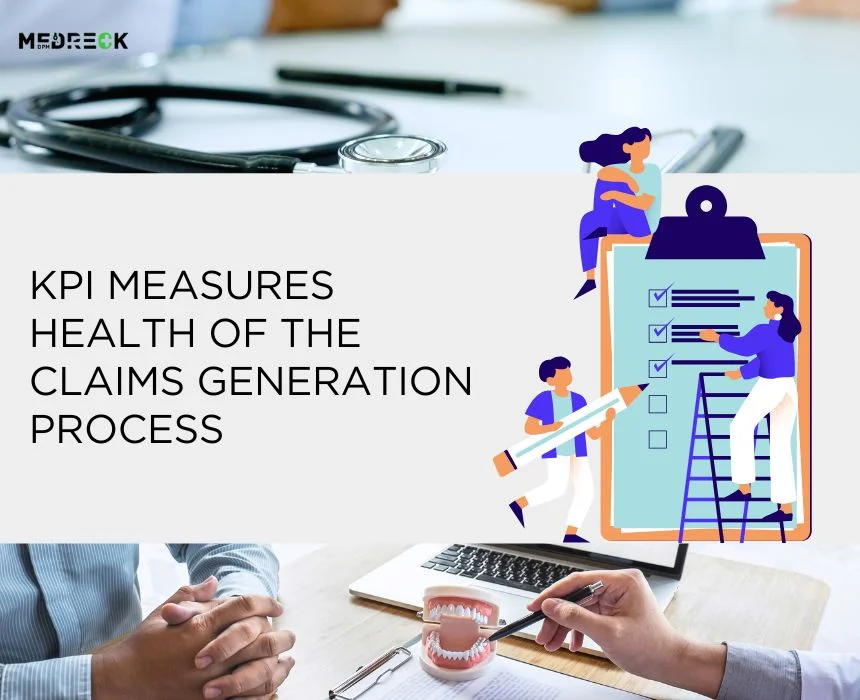Tables of Content
1. What Is KPI?
KPIs also known as Key Performance Indicators are units to evaluate an organization. In simple terms, they are a measure of performance. When you study the KPI of a company you can evaluate what improvisation needs to be done concerning a certain policy of the company. KPI helps employees or team members to set targets and work accordingly.
2. What Is The Claims Generation Process?
The claim generation process is mainly about claiming reimbursement or coverage when a person or company has incurred a loss. So when you have insurance for that loss, you can file for a claim from the insurance provider and get compensated for the loss. A health insurance claim is a request for compensation for the expenses that were incurred during the treatment. The claim generation process mainly involves the following steps:
-
Notification
-
Documentation
-
Claim Assessment
-
Adjudication
-
Claim Processing
-
Communication
3. How Is KPI Related To The Claims Generation Process?

As we know KPI evaluates the performance of a company or a service that a company provides. Claim generation is one such process which can be assessed using the KPI measures. With the help of KPI measures a company can evaluate the shortcomings of the claim generation process. If a certain policy needs improvisation, or if the organization needs to know if the service is meeting its purpose, KPIs provide a valuable assessment.
4. Here Is A List Of KPIs Commonly Used To Measure The Claim Generation Process:
1. First pass resolution rate (FPRR):
2. Average claim processing time:
3. Claims backlog:
4. Customer satisfaction rating:
5. Claims cost ratio:
6. Bad debt rate:
7. Claims denial rate:
8. Clean claim ratio (CCR):
-
-
This KPI is used in healthcare RCM. It helps to measure the efficiency of the billing process.
-
It refers to the percentage of claims which have gone into processing on their first submission.
-
A high FPRR tells the observer that the billing process of this particular healthcare organization is smooth without any denials and rejections.
-
A low FPRR on the other hand shows that the billing process has many underlying issues with the billing system.
-
One can calculate the FPRR by dividing the number of claims paid on the first submission by the total number of claims and multiplying the result by 100 to get the percentage.
-
The better the FPRR, the more efficient the claim-generation process
-
This KPI as the name suggests measures the time taken by the organization to settle the claim.
-
It gives you an average time required to Settle the claim, for each type of policy.
-
The period extends from the moment you submit the claim until it is resolved.
-
The shorter the claim processing time, the more efficient the claim generation process
-
When talking about the claim generation process the healthcare organization mustn't have a backlog.
-
When you find that the organization has claim backlogs, this indicates that the claim generation process in the said organization is inefficient.
-
Customer satisfaction holds utter importance when any kind of service is being provided.
-
This KPI is a key measure for any kind of business which focuses on customer satisfaction.
-
An insurance business mainly works on recurring revenue from the old customers, hence good quality customer service is essential.
-
A high customer satisfaction rating indicates that the claim generation process is smooth and hassle-free, which attracts more customers to the organization.
-
It is the ratio of the number of claims divided by the total premium earned in the considered period.
-
This KPI helps measure the sustainability of the claim.
-
A bad debt rate tells you the collection efficiency of the organization.
-
A higher bad debt value is easily shown off in the previous year's revenue cycle which affects the organization's standards.
-
A denial rate of an organization tells you how many of their claims have been denied.
-
An organization should not only have a high clean claim ratio but also a lower claim denial ratio.
-
This KPI can be calculated by dividing the number of claims denied by the number of claims billed.
-
This KPI measures the inefficiency of the company's claim processing and submission.
-
Rejected claims mount up and take a huge amount of time to be corrected which in turn affects the company's profile and customer satisfaction rating.
-
The clean claim rate talks about the average daily claims that are passed instead of the total number of claims accepted.
-
Having a CCR above 90% or 95% reflects a successful RCM strategy which in turn provides a high customer rating.
-
5. Which KPI Will Improve The Claims Operation?
Now that you have a clear idea of what KPIs are and what role they play in the claim-generation process, it is important to decide which KPI will have the most impact on your claim-generation process.
What KPI metrics are important depends on the particular employer of the organization. However, the basis of a claims operation is creating a baseline.
Creating a baseline will help you in the following ways:
-
The baseline takes a sample of the recent data. This is how you will know whether your chosen KPI is improving your claims operation.
-
When considering seasonal KPI, take the data sample from the previous season.
-
After considering all the KPIs, map out a strategy to achieve the goal.
-
Offer company-wide training to all employees and create tasks to be followed.
6. Conclusion
A key performance indicator is an important aspect which provides a measure of the efficiency and accuracy of the organization. It also helps the organization by providing insight into the company's performance, tracking progress and helping identify areas of improvisation. The KPIs help to boost the RCM performance which in turn benefits the company. The RCM performance needs to meet industry standards.
